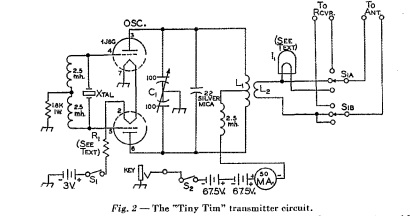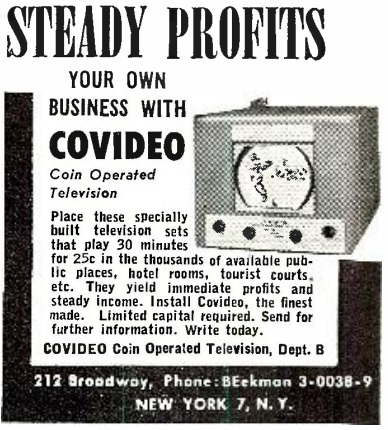 Seventy years ago this month, the April 1955 issue of QST contained the plans for this miniature station. Dubbed the “Tiny Tim,” the station weighed in at a mere 18 pounds, including batteries. It could be used for CW on 80 and 40 meters, and the self-contained station made you ready for any emergency, or for plenty of fun from home, on a boat, at the beach, climbing a mountain, or wherever.
Seventy years ago this month, the April 1955 issue of QST contained the plans for this miniature station. Dubbed the “Tiny Tim,” the station weighed in at a mere 18 pounds, including batteries. It could be used for CW on 80 and 40 meters, and the self-contained station made you ready for any emergency, or for plenty of fun from home, on a boat, at the beach, climbing a mountain, or wherever.
The receiver was a two-tube regenerative. The author, Stuart D. Cowan, III, W1RST (later W2LX) advised that a single coil could be used for both bands, but it was better to use separate coils for enough bandspread.
The transmitter was almost identical to the 1947 “Last Ditcher” that we previously featured. It ran about two watts, using a 1JG6 twin triode operating as a push-pull crystal oscillator.
An antenna was mounted on the side of the set, and was a base loaded four section automobile antenna from Montgomery Wards.
The author noted that his 11-year-old son, WN1BRS, assisted with its construction and manned the home station during tests. According to the 1954 call book, the son was Stuart A. Cowan, who is also listed with his novice call sign in 1955. However, he is no longer listed in the 1956 call book, meaning that he didn’t upgrade to General in the one year of his novice license.














